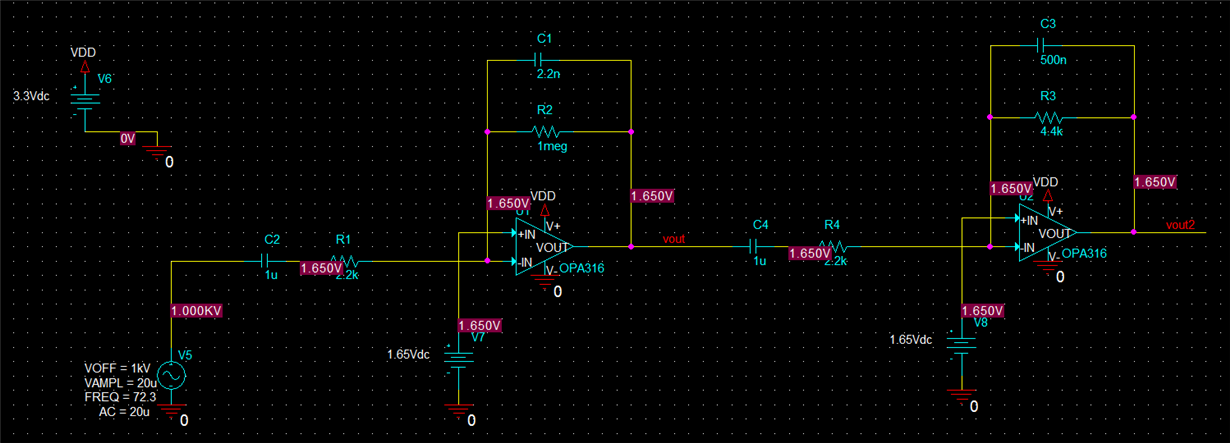Other Parts Discussed in Thread: TINA-TI, LMP7731, LMC6001, OPA316
Tool/software: TINA-TI or Spice Models
Dear community,
I'm currently simulating a design with the LMP7731 amplifier and I got simulation issues in OrCAD PSpice (I'm using version "17.2-2016 S048"). I got the following error message:
ERROR(ORPSIM-16550): Floating point computation failed during matrix solution. Possible solutions: 1)Ensure that all device parameters are in valid range. 2)Try using .options LIMIT
INTERNAL ERROR -- Divide by Zero, Divide
ABORTING SIMULATION
You'll find attached my test bench. If I try the test bench provided with the model, it works fine. Then I modify it to let it work in single supply with an offset to half supply at the input, then it does not converge any more. Your help to get this design converge will be highly appreciated. I try the "AUTOCONVERGE" option but it doesn't resolve the problem and I also don't like this solution as it relax some parameters and simulation accuracy is lower.
Kind regards
Etienne Haenni



